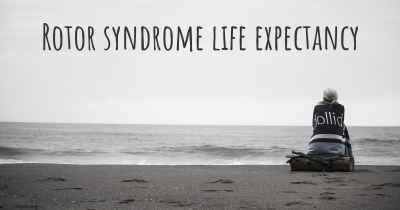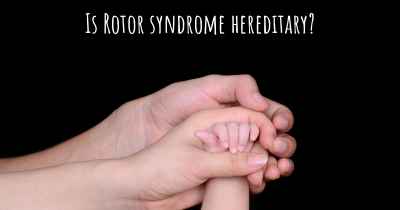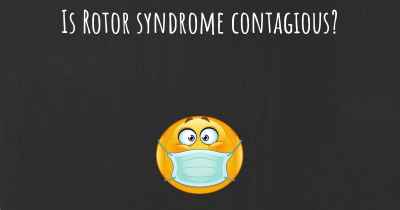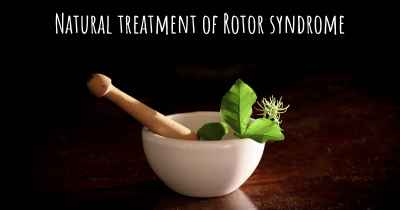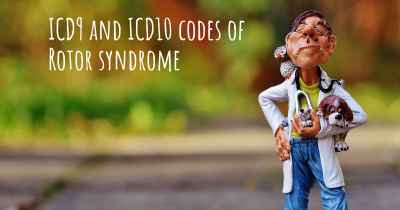How is Rotor syndrome diagnosed?
See how Rotor syndrome is diagnosed. Which specialists are essential to meet, what tests are needed and other useful information for the diagnosis of Rotor syndrome
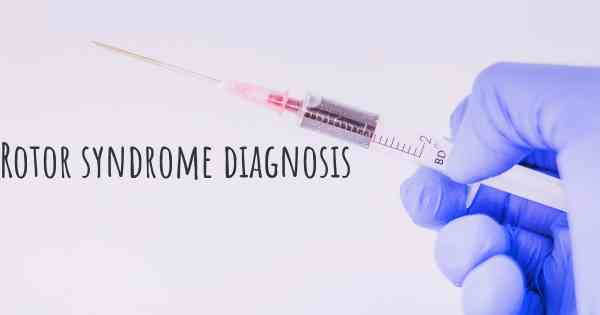
Diagnosis of Rotor Syndrome
Rotor syndrome is a rare genetic disorder characterized by impaired bilirubin metabolism, resulting in elevated levels of bilirubin in the blood. It is often diagnosed during infancy or early childhood, but in some cases, it may not be identified until adulthood. The diagnosis of Rotor syndrome involves a combination of clinical evaluation, laboratory tests, and imaging studies.
Clinical Evaluation
The first step in diagnosing Rotor syndrome is a thorough clinical evaluation by a healthcare professional. The doctor will review the patient's medical history, including any symptoms or signs of liver dysfunction. They will also perform a physical examination to assess for any physical abnormalities or signs of jaundice, such as yellowing of the skin or eyes.
Laboratory Tests
Several laboratory tests are used to diagnose Rotor syndrome and rule out other liver disorders. The most important test is a blood test to measure the levels of bilirubin in the blood. In Rotor syndrome, there is typically a persistent elevation of both unconjugated and conjugated bilirubin. Unconjugated bilirubin is the form that is not processed by the liver, while conjugated bilirubin is the form that has been processed by the liver.
In addition to bilirubin levels, other liver function tests may be performed to assess the overall liver health. These tests include measurements of liver enzymes, such as alanine aminotransferase (ALT) and aspartate aminotransferase (AST), as well as tests for liver synthetic function, such as albumin and prothrombin time.
Genetic Testing
Genetic testing plays a crucial role in confirming the diagnosis of Rotor syndrome. It involves analyzing the patient's DNA to identify any mutations or changes in the genes associated with the disorder. The most common genetic mutations associated with Rotor syndrome are found in the SLCO1B1 and SLCO1B3 genes, which are responsible for the transport of bilirubin in the liver.
Genetic testing can be done using a blood sample or a saliva sample. The sample is sent to a specialized laboratory where the DNA is extracted and analyzed. If a mutation is identified in the SLCO1B1 or SLCO1B3 genes, it provides strong evidence for a diagnosis of Rotor syndrome.
Imaging Studies
Imaging studies are not always necessary for the diagnosis of Rotor syndrome, but they can be helpful in ruling out other liver disorders and assessing the liver's structure and function. The most commonly used imaging technique is an abdominal ultrasound, which uses sound waves to create images of the liver and other abdominal organs.
In Rotor syndrome, the ultrasound is typically normal, showing no structural abnormalities in the liver or bile ducts. However, it can help exclude other conditions that may present with similar symptoms, such as biliary obstruction or liver tumors.
Differential Diagnosis
It is important to differentiate Rotor syndrome from other liver disorders that may present with similar symptoms. One such condition is Dubin-Johnson syndrome, which also causes elevated levels of conjugated bilirubin in the blood. However, in Dubin-Johnson syndrome, there is a characteristic dark pigment in the liver cells, which can be visualized under a microscope.
Other liver disorders that may need to be ruled out include Gilbert syndrome, Crigler-Najjar syndrome, and various forms of liver disease.
Conclusion
Diagnosing Rotor syndrome involves a combination of clinical evaluation, laboratory tests, genetic testing, and imaging studies. The clinical evaluation helps assess the patient's symptoms and physical findings, while laboratory tests measure the levels of bilirubin and assess liver function. Genetic testing confirms the presence of specific mutations associated with Rotor syndrome, and imaging studies help rule out other liver disorders. It is important to accurately diagnose Rotor syndrome to provide appropriate management and genetic counseling for affected individuals.
